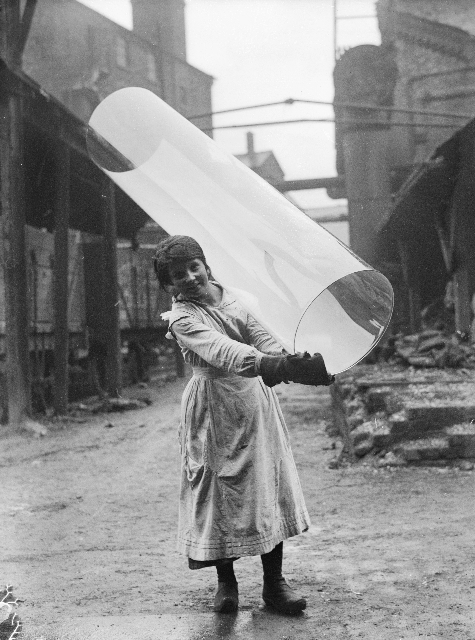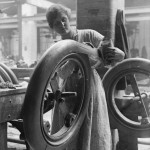While the women who joined the war effort took on the hard labour of traditional male jobs, making them equals, the battle for true equality of the sexes was to take much longer…
With so many men away, women were called upon to work in industry – from glass-making to keeping the factories going – a far cry from their traditional roles as dressmakers, nurses and teachers. When peace fi nally came to an exhausted and traumatised country, more than 100,000 others had served as nurses, 113,000 worked on the land, 900,000 in munitions factories and 117,000 in transport services.
In all the thousands of events and exhibitions that are taking place this year, it is pleasing to see the role of women writ large at an exhibition outside the Imperial War Museum North with six stunning images of women as modernists, captured in a modern art form – the photograph – and by one of the pioneers of the genre, G P Lewis War photography has now become an important art form with some of the most iconic images of our age coming from conflicts. The first known war photographer is believed to be John McCosh, a serving officer and surgeon in the Bengal Army who took photographs of the Second Sikh War from 1848-9. These grainy but important images give us a fascinating insight into the past.
The photographer George Parham Lewis, working at the turn of the last century, specialised in documenting heavy industry and photographed women workers in the glass, vehicle and food industries. Six of his images have been turned into five-metre high displays for the free exhibition at IWM North in Manchester.
They document women’s vital contribution to the war effort in factories across the North West of England almost 100 years ago. Taken from IWM’s renowned Photographic Archive, the images were jointly commissioned by IWM and the Ministry of Information, demonstrating the wide range of roles performed by women during the First World War. Lewis’s photographs include female workers in an oil and cake factory in Lancashire, 1918 (oil cakes were used to feed cattle); women making wheels in Charles Macintosh and Sons’ Ltd rubber factory in Manchester; a female glass worker carrying a tube of rolled glass at Pilkington Glass Ltd, St Helens, 1918 (which still exists today); women working in an asbestos factory and women workers operating a grain elevator at the mills of Messrs. Rank & Sons in Birkenhead, 1918.
The war prompted an unprecedented call for military material to cope with the demand from the front – and of course, the huge death toll and the ferocity of the battles meant this demand remained. The images are part of the museum’s programme to mark the centenary of the war, which includes a major exhibition, now open called From Street To Trench: A War that Shaped a Region.
This features more than 200 objects, films, recordings, photographs and letters and shows how the war affected the North West, which was a major recruitment ground, with many young men leaving home for the first time – heading for Gallipoli and the Somme.




